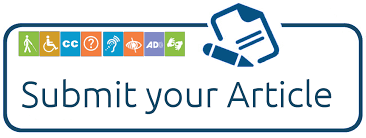Analysis of Internal Control of Accounts Receivable for Travel Agents at Four Seasons Resort at Jimbaran Bay
Abstract
Four Seasons Resort at Jimbaran Bay has experienced a significant increase in accounts receivable balance every year. Based on the table of sources of credit sales and the amount of accounts receivable balance for the period 2021 to 2023, it shows that the largest accounts receivable balance comes from travel agents, accompanied by a slow turnover rate of receivables. This indicates that the collection process of receivables has not been functioning well and poses a risk of uncollectible receivables which impacts the hotel’s operational cash flow. This research seeks to assess the internal controls related to travel agent receivables at the Four Seasons Resort Jimbaran Bay from 2021-2023 by the application of the COSO (Committee of Sponsoring Organizations of the Treadway Commission) framework. A qualitative data analysis method was employed, utilizing triangulation of primary and secondary data from interviews and observations to ensure credibility and validity. Findings shows that the internal control over receivables at the Four Seasons Resort at Jimbaran Bay is still not optimal in terms of the five existing components. The implementation of the risk assessment component for monitoring activities has not been optimally executed. Thus, improvement is needed to avoid the risk of uncollectible receivables. Meanwhile, the control environment component, control activities, information, and communication have been operating optimally as seen from the performance of employees which is in accordance with the operational standards set by the company.
References
Amri, N. F., Jumarding, A., Nurdyansa, N., & Farida, F. (2022). Realita Dibalik Tirai Akuntansi yang Bertara Dengan Kerangka Teori Coso 5C. SEIKO : Journal of Management & Business, 5(2). https://doi.org/10.37531/sejaman.v5i2.3796
Ayu, R. (2023). Analisis Sistem Pengendalian Piutang Terhadap Piutang Tak Tertagih pada PT. Abadi Sakti Mitra Mandiri. Jurnal EMT KITA, 7(4), 911–924. https://doi.org/10.35870/emt.v7i4.1516
Chan, K. C., Chen, Y., & Liu, B. (2021). The Linear and Non-Linear Effects of Internal Control and Its Five Components on Corporate Innovation: Evidence from Chinese Firms Using the COSO Framework. European Accounting Review, 30(4). https://doi.org/10.1080/09638180.2020.1776626
COSO. (2012). Internal Control—Integrated Framework: Framework and Appendices, September 2012. https://egrove.olemiss.edu/cgi/viewcontent.cgi?article=1775&context=aicpa_assoc
Dewi, N. L. P. P., & Pradnyani, N. L. P. S. P. (2022). Analisis Pengendalian Internal Piutang Usaha Untuk Meminimalkan Piutang Tak Tertagih Pada Pandawa All Suites Hotel Umalas. Seminar Ilmiah Nasional Teknologi, Sains, Dan Sosial Humaniora, 5, 117–124.
Dika, I. K., Triyuni, N. N., & Meirejeki, I. N. (2018). Public relations strategy in attracting customers at the Hotel Four Seasons Resort Bali at Jimbaran Bay. Journal of Applied Sciences in Travel and Hospitality, 1(1).
Dwi, N. L. K. A. N., & Wasita, P. A. A. (2023). Analisis Pengendalian Internal Piutang Usaha Untuk Meminimalkan Piutang Tak Tertagih Pada Harris Hotel Seminyak. Seminar Ilmiah Nasional Teknologi, Sains, Dan Sosial Humaniora (SINTESA), 6.
Geiger, M. A., Cooper, S. M., & Boyle, E. J. (2004). Internal control components: Did COSO get it right? The CPA Journal, January.
Ngugi, S. (2014). Determinants of accounts receivables management in the hotel industry in Kenya. Journal of Information Systems Engineering & Management, 1.
Rachman, A., Yochanan, Samanlangi, A. I., & Purnomo, H. (2023). Metode Panelitian Kuantitatif, Kualitatif, dan R&D. Saba Jaya Publisher.
Rizky Alvionnita, F., Solikhin, A., Gusti Ayu Agung, I., & Tinggi Pariwisata Sahid Surakarta, S. (2020). Analisis Sistem Pengendalian Internal Terhadap Pengelolaan Piutang Usaha Pada Yogyakarta Marriott Hotel. Jurnal Pariwisata Indonesia, 16(1).
Sara, I. G. D. R., Waciko, K. J., & Yasa, G. S. W. (2024). Analisis Pengendalian Internal Piutang dalam Meminimalisir Piutang Tak Tertagih pada Hotel Alila Seminyak. Neraca: Jurnal Ekonomi, Manajemen Dan Akuntansi, 2(10), 376–396.
Satori, D., & Komariah, A. (2014). Metodologi penelitian kualitatif. Alfabeta.
Sugiyono. (2019). Metode Penelitian Kuantitatif Kualitatif dan R&D. Alfabeta.
Wiyasha, I. B. M. (2024). Akuntansi Perhotelan, Penerapan Uniform System of Accounts for The Lodging Industry. Penerbit Andi.
Copyright (c) 2025 Ni Putu Novie Amelia Putri, Ni Ketut Mareni, I Putu Arnawa

This work is licensed under a Creative Commons Attribution 4.0 International License.










.png)




.png)
.png)











.jpg)
.png)


